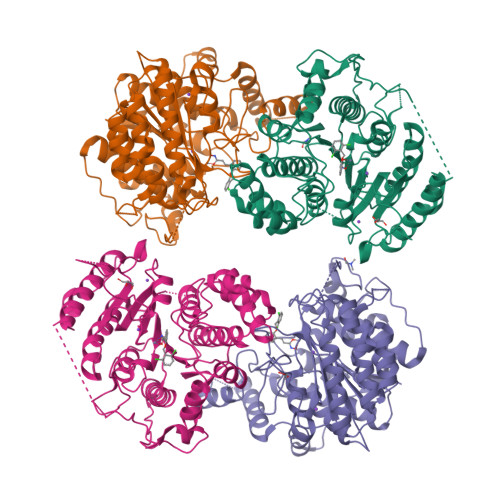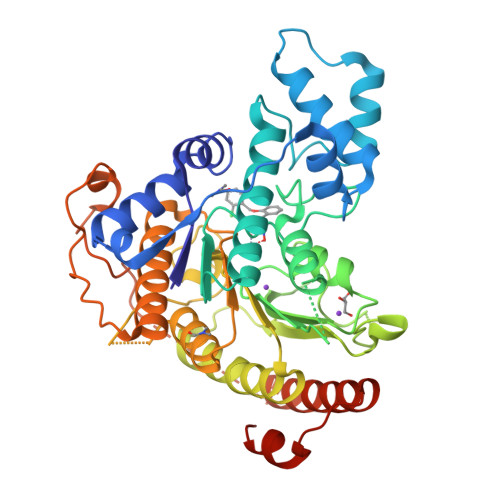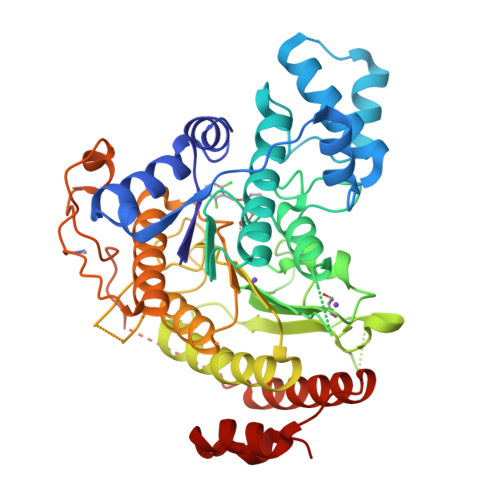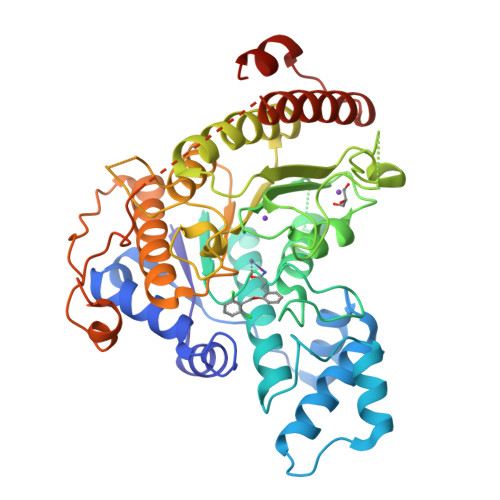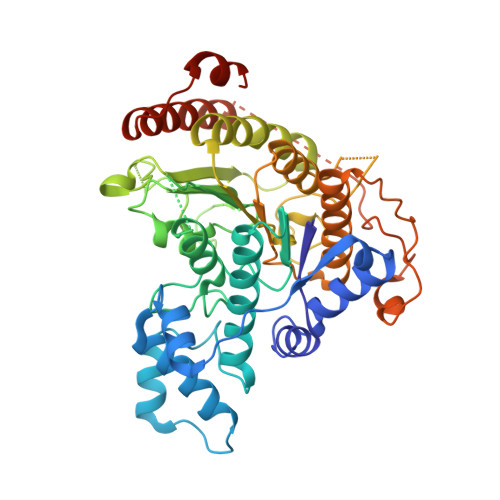Synthesis, Crystallization Studies, and in vitro Characterization of Cinnamic Acid Derivatives as SmHDAC8 Inhibitors for the Treatment of Schistosomiasis.
Bayer, T., Chakrabarti, A., Lancelot, J., Shaik, T.B., Hausmann, K., Melesina, J., Schmidtkunz, K., Marek, M., Erdmann, F., Schmidt, M., Robaa, D., Romier, C., Pierce, R.J., Jung, M., Sippl, W.(2018) ChemMedChem 13: 1517-1529
- PubMed: 29806110
- DOI: https://doi.org/10.1002/cmdc.201800238
- Primary Citation of Related Structures:
6GX3, 6GXA, 6GXU, 6GXW - PubMed Abstract:
Schistosomiasis is a neglected parasitic disease that affects more than 265 million people worldwide and for which the control strategy relies on mass treatment with only one drug: praziquantel. Based on the 3-chlorobenzothiophene-2-hydroxamic acid J1075, a series of hydroxamic acids with different scaffolds were prepared as potential inhibitors of Schistosoma mansoni histone deacetylase 8 (SmHDAC8). The crystal structures of SmHDAC8 with four inhibitors provided insight into the binding mode and orientation of molecules in the binding pocket as well as the orientation of its flexible amino acid residues. The compounds were evaluated in screens for inhibitory activity against schistosome and human HDACs. The most promising compounds were further investigated for their activity toward the major human HDAC isotypes. The most potent inhibitors were additionally screened for lethality against the schistosome larval stage using a fluorescence-based assay. Two of the compounds showed significant, dose-dependent killing of the schistosome larvae and markedly impaired egg laying of adult worm pairs maintained in culture.
Organizational Affiliation:
Institute of Pharmacy, Martin Luther University of Halle-Wittenberg, Wolfgang-Langenbeck-Str. 4, 06120, Halle/Saale, Germany.








